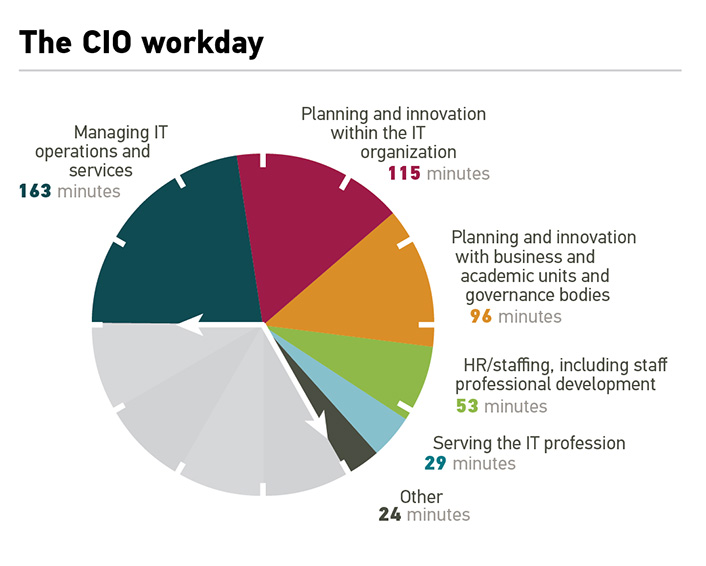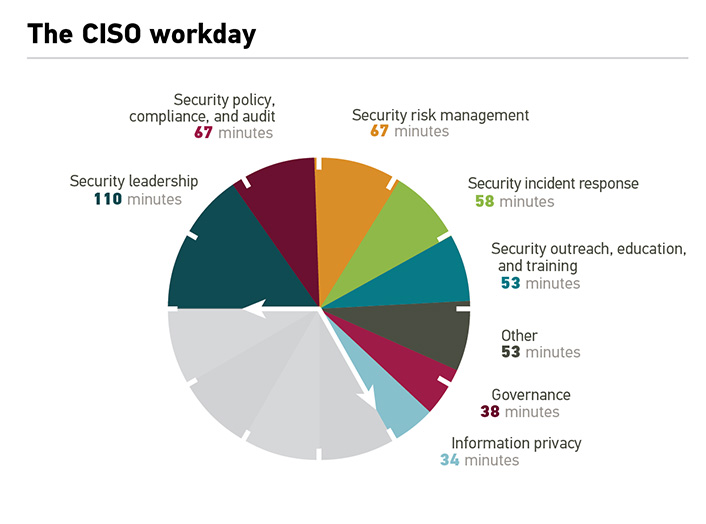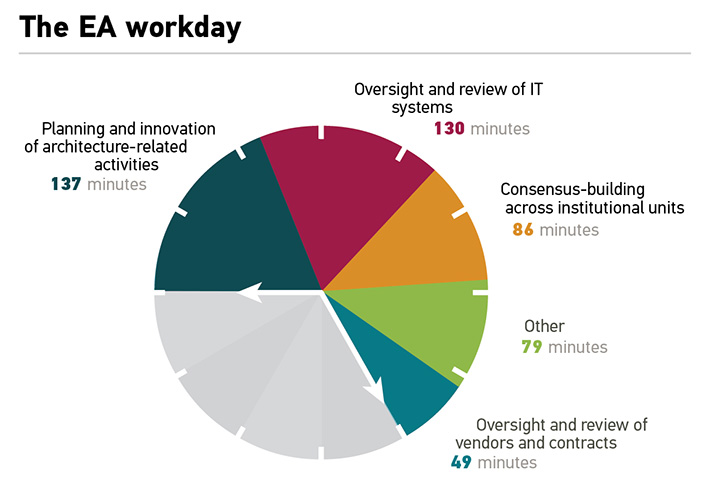See how IT leaders would spend a typical eight-hour workday (if they actually worked just eight hours).

The EDUCAUSE Center for Analysis and Research wrapped up its IT Workforce in Higher Education, 2016 series of research reports last fall. This series includes IT leadership reports on the chief information officer, the chief information security officer, the enterprise architect, and the chief data officer. These studies identified the characteristics and functions of these IT leadership positions — the background and training these individuals possess, the personal and professional characteristics that contribute to their success, and their scope of work and responsibilities. This post expands on some of the data presented in these reports.
The surveys of IT leaders asked respondents how they allocate their time, according to a small set of broad activities, different for each of the four leadership positions: "On average, what percentage of your time do you allocate to the following activities?" The survey instrument forced individual respondents' answers to these questions to sum to 100%, on the assumption that these lists (plus an Other option) were exhaustive. The amounts of time allocated by IT leaders to these various activities were presented in a figure in each of the four reports.
Naturally the amount of time spent on activities varies by individual and over time. Furthermore, the data collected from this survey question were self-reported, not the result of any time-tracking by the respondents. Self-reporting is of course subject to many cognitive biases and errors. However, this survey question asked respondents to estimate percentage of time overall, not to estimate the amount of time spent on one iteration of any of these activities. Errors in estimation by individuals are hopefully attenuated by this generalization and by aggregating across all respondents.
The eight-hour workday is a more-or-less arbitrary social construct. Indeed, there is evidence that eight hours is not an accurate indicator of the amount of time that most workers in the U.S. labor force work per day.1 Nevertheless, the concept of the eight-hour workday is a cultural touchstone and provides context for much current thinking in the United States about work and work–life balance. We therefore use this eight-hour model here, even in full recognition of its limitations, as a framework that will be easily interpretable, for presenting these time-on-task findings.
All that said, figures 1–4 show the percentage of time that IT leaders said they spend on various high-level activities, presented as an eight-hour workday (480 minutes).2




Notes
- Surprisingly, the data indicate that the US workforce works less than eight hours per day. See US Bureau of Labor Statistics, American Time Use Survey Summary, June 27, 2017; Organisation for Economic Co-operation and Development, Average annual hours actually worked per worker, 2017. ↩
- Presented are the mean amounts of time indicated by respondents for each task. For example, the typical CIO spends about 34% of their time managing IT operations and services. That translates to 163 minutes of a 480-minute workday. ↩
Jeffrey Pomerantz is Associate Professor of Practice and the Coordinator of Online Programs in the School of Library and Information Science at Simmons College.
© 2018 Jeffrey Pomerantz. The text of this work is licensed under a Creative Commons BY-NC-SA 4.0 International License.
